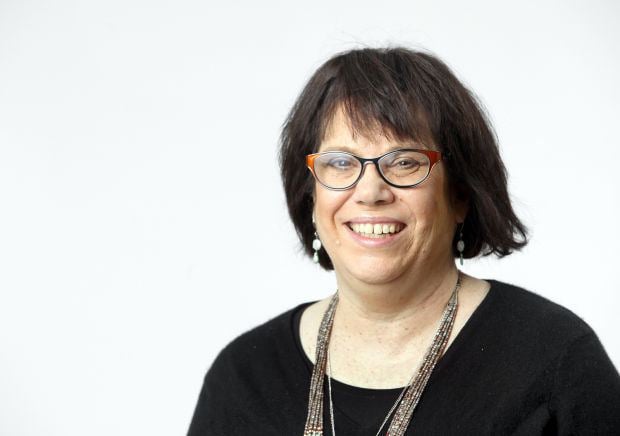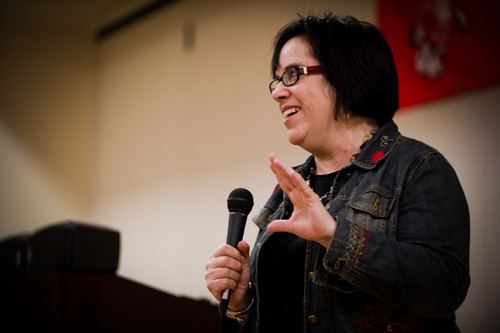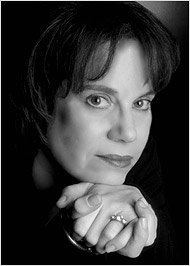Nationality American Movies Vibes | Role Journalist Name Deborah Blum | |
 | ||
Occupation Professor, blogger, journalist, author, director, science writer Nominations Goodreads Choice Awards Best History & Biography Books The Poisoner's Handbook, Love at Goon Park, Ghost Hunters, Sex on the Brain, The Best American Science a Similar People Tim Folger, Tim Hunt, Lowell Ganz, Ken Kwapis | ||
Deborah blum science journalism and women
Deborah Blum (born October 19, 1954) is an American journalist and the director of the Knight Science Journalism program at the Massachusetts Institute of Technology. She is author of books including The Poisoner's Handbook (2010). and has been a columnist for the New York Times and a blogger for Wired.
Contents
- Deborah blum science journalism and women
- Deborah Blum On Science Writing interview
- Background and early career
- Environmental journalism
- Science writing and teaching
- Tim Hunt controversy
- Knight Science Journalism Program at MIT
- Personal life
- References

As science writer for the Sacramento Bee, Blum wrote a series of articles examining the professional, ethical, and emotional conflicts between scientists who use animals in their research and animal rights activists who oppose that research. Titled "The Monkey Wars", the series won the 1992 Pulitzer Prize for Beat Reporting.

Deborah Blum On Science Writing interview
Background and early career

Born in Urbana, Illinois, Blum grew up in Baton Rouge, Louisiana, Bristol, England, and Athens, Georgia. She graduated from the University of Georgia where she was editor of the student newspaper, The Red and Black. She worked as a reporter covering police, fires, courts, and other general assignment beats for newspapers in Georgia, Florida and California before she turned to science writing. She was on the staffs of the Macon Telegraph, the St. Petersburg Times and the Fresno Bee, among other publications.
Environmental journalism
After earning a master's degree in environmental journalism from the University of Wisconsin–Madison, Blum returned to the Fresno Bee, where she became an award-winning environmental reporter. She was the first to report on the startling incidence of severely deformed waterfowl at the Kesterson National Wildlife Refuge, where poor management of irrigation runoff had polluted the wetland with toxic levels of the element selenium. Her work for the Fresno Bee put the mid-sized paper ahead of much larger regional rivals, including the San Francisco Chronicle and the Los Angeles Times in covering this major environmental story.
Science writing and teaching
In 1984, Blum joined the staff of the Sacramento Bee, where she broadened her range, covering science subjects as diverse as medical issues, superconductivity, and the physics of weaponry. Her series "California: The Weapons Master" was awarded the 1987 Livingston Award for National Reporting. In 1992 the American Association for the Advancement of Science awarded her its AAAS-Westinghouse Award for Science Journalism, also for the "Monkey Wars" series.
Blum expanded the Pulitzer Prize-winning newspaper series into a book of the same title. Her second book, Sex on the Brain examines the biological differences between men and women. In Love at Goon Park, she explores the life and career of groundbreaking psychology researcher Harry Harlow, and in Ghost Hunters she follows a quest by 19th century psychologist-philosopher William James and colleagues to apply objective scientific methods to the study of paranormal phenomena. In The Poisoner's Handbook she explores the pioneering work of two unheralded scientists who paved the way for modern forensic detectives. This book was promoted on Point of Inquiry. She received the James T. Grady-James H. Stack Award for Interpreting Chemistry for the Public from the American Chemical Society in 2015 for this book.
Blum has written, most often about science and its interrelationship with American culture, for publications that have included the New York Times, The Wall Street Journal, The Boston Globe, Time, the Washington Post, the Los Angeles Times, Discover, Psychology Today, Rolling Stone, the Utne Reader, and Mother Jones. In 2013, she began writing "Poison Pen" which appears as a column in the New York Times and as a blog post in the newspaper's online edition. Her blog "Elemental" appears regularly on the Wired website. After becoming director of the Knight Science Journalism Program, she created and became publisher of a new on-line science magazine, Undark.
From 1997 until 2015, she was a professor in the School of Journalism and Mass Communication at the University of Wisconsin–Madison. In 2005 she was appointed Helen Firstbrook Franklin Professor of Journalism, an endowed faculty position within the University of Wisconsin journalism school. In July 2015, she became director of Knight Science Journalism at MIT.
A past president of the National Association of Science Writers, she has been a member of the governing board of the World Federation of Science Writers and has also served on such panels for the Council for the Advancement of Science Writing, the AAAS Committee on Public Understanding of Science and Technology, the National Research Council’s Board on Agriculture and Natural Resources, the Society for Science & the Public and a US Congress committee on science. Blum is co-editor (with Mary Knudson and Robin Marantz Henig) of the book A Field Guide for Science Writers.
Tim Hunt controversy
In 2015, after Nobel Prize winning biochemist Tim Hunt made a controversial speech about women in science, Blum was one of three journalists present who initially broke the story. Although acknowledging that parts of it praised women scientists, she wrote that she found Hunt's speech troubling even after she asked him for clarification. Reporting on accusations that Hunt had been taken out of context, conflicting recollections of the phrase "now seriously" became a focal point for many commentators. Blum stated that she did not remember whether or not he spoke these words. Former UK member of Parliament Louise Mensch has documented what she considers to be factual and ethical shortcomings in Blum's account of Hunt's remarks. These claims have been disputed by British journalist and author Dan Waddell, who argues that they are politically motivated.
Knight Science Journalism Program at MIT
Blum became director of the Knight Science Journalism Program, a highly respected mid-career fellowship program endowed by the James S. and John L. Knight Foundation, in July 2015. The following year, she expanded on the fellowship program by launching Undark, a new digital science magazine, dedicated to exploring the intersection of science and society. The magazine's debut, in March 2016, was hailed by the Columbia Journalism Review in a story titled, "Can Undark Go Where No Other Online Science Magazine Has Gone Before?" The magazine's founding editor in chief is Tom Zeller, long time environment writer for The New York Times. In July 2016, David Corcoran, former editor of Science Times at The New York Times, joined the program as a senior editor at the magazine and associate director of the program.
Personal life
Blum is the eldest of four daughters born to entomologist Murray S. Blum and his wife Nancy Ann Blum, an educator and writer. Her father, a noted authority on chemical ecology, helped mold Blum's appreciation of nature and a respect for science. Her mother's influence may be seen in the daughter's love of language and writing.
She is descended on her mother's side from old Kentucky stock that traces back to pre-Revolutionary English-Americans as well as to long-settled Irish and German immigrant stock. On her father's side, she is descended from European Jews who arrived in the United States considerably later. Her maternal grandfather was a railroad attorney and her paternal grandfather was a shopkeeper and window dresser in Philadelphia and Chicago.
Blum and her husband have raised two sons.
